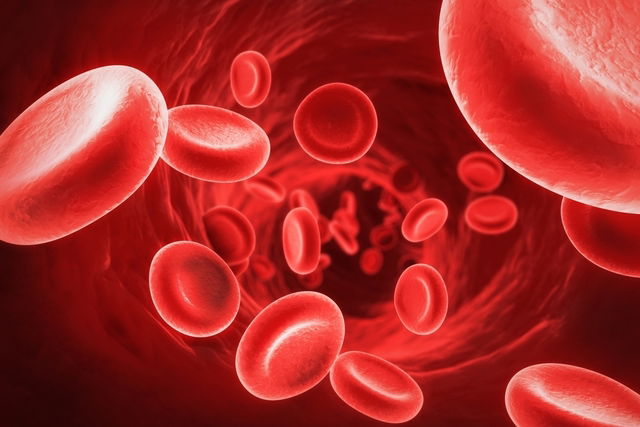Hemoglobin is a component of red blood cells that serves to transport oxygen to tissues. Hemoglobin is composed of heme, which is made up of iron, and globin chains. These chains are categorized as alpha, beta, gamma or delta, which form the different types of hemoglobin.
Hemoglobin levels can be measured through traditional bloodwork or with a point-of-care devices. Depending on the hemoglobin present and the result of other blood values, the doctor can determine a patient’s general health status.
Generally, low hemoglobin levels is related to anemia, thalassemia or with internal or external bleeding. High levels of hemoglobin can occur with dehydration, tobacco use or pulmonary emphysema.

Types of hemoglobin
Hemoglobin can be classified by its structure and composition, as follows:
- HbA1, which is made up of 2 alpha chains and 2 beta chains; this is the most concentrated type of hemoglobin in the blood
- HbA2, which is made up of 2 alpha chains and 2 delta chains
- HbF, which is made up of 2 alpha chains and 2 gamma chains, this type is most concentrated in newborns, and amounts start to decrease as babies develop and grow
In addition to these types of hemoglobin, there are also Hb Gower I, Gower II and Portland types, which are present during the embryonic stage. These types will decrease and HbF increases as the due date approaches.
Variants of hemoglobin may also exist due to structural or functional abnormalities within the cell. These changes to hemoglobin are noted in sickle cell disease and thalaessmia. Hemoglobin electrophoresis testing, in addition to other blood work, can confirm the presence of hemoglobin disorders.
Normal hemoglobin levels
Normal values for hemoglobin are:
- Children 2 to 6 years old: 115 to 135 g/L
- Children 6 to 12 years old: 115 to 155 g/L
- Men: 140 to 180 g/L
- Women: 120 a 160 g/L
- Pregnant women: 110 g/L
These reference ranges can vary between different labs.
Low hemoglobin levels
A decreased amount of hemoglobin can occur with anemia, cirrhosis, lymphoma, leukemia, hypothyroidism, renal failure, thalaessemia, porphyria, and hemorrhages. A low hemoglobin can also occur with vitamin or mineral deficiencies, or can be a side effect of cancer or AIDS medication.
A low hemoglobin level can cause symptoms like persistent fatigue, shortness of breath, and pallor. The cause should be identified and treated accordingly by a doctor.
High hemoglobin levels
A high hemoglobin can be caused by:
- Tobacco use
- Dehydration
- Pulmonary emphysema
- Pulmonary fibrosis
- Polycythemia
- Kidney tumor
- Use of anabolic steroids or erythropoetin
High hemoglobin can cause symptoms like dizziness, blue lips, and in rare cases, temporary vision or hearing loss.
Glycated hemoglobin
Glycated hemoglobin (or glycosylated hemoglobin) is a diagnostic test that looks at the average blood sugar levels over the last 3 months. It can be used as a diagnostic or monitoring test for diabetes, and can be used to evaluate the severity of the disease.
The normal value of a glycated hemoglobin is 5.7%. Diabetes can be confirmed with values that are equal to or above 6.5%.
Hemoglobin in urine
The presence of hemoglobin in urine is referred to as hemoglobinuria. It normally indicates a kidney infection, but can also be a sign of malaria or lead poisoning. Hemoglobin in the urine can be confirmed with an R&M urine test. Learn more about what causes hemoglobin in urine and how it can be treated.
Blood disorders like anemia or leukemia can be evaluated with hemoglobin tests, as well as hematocrit testing.
